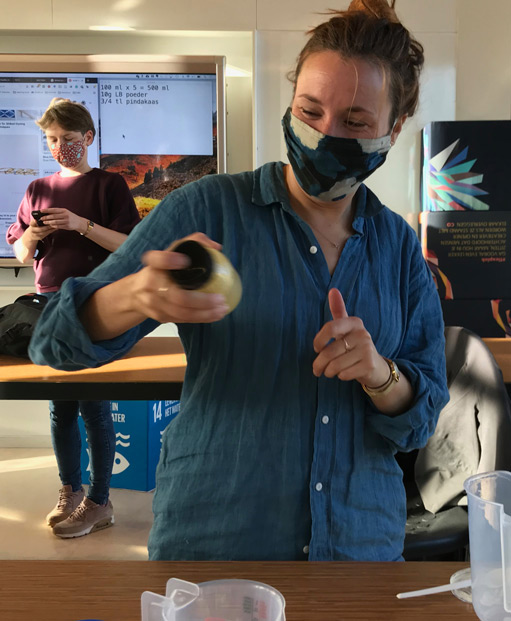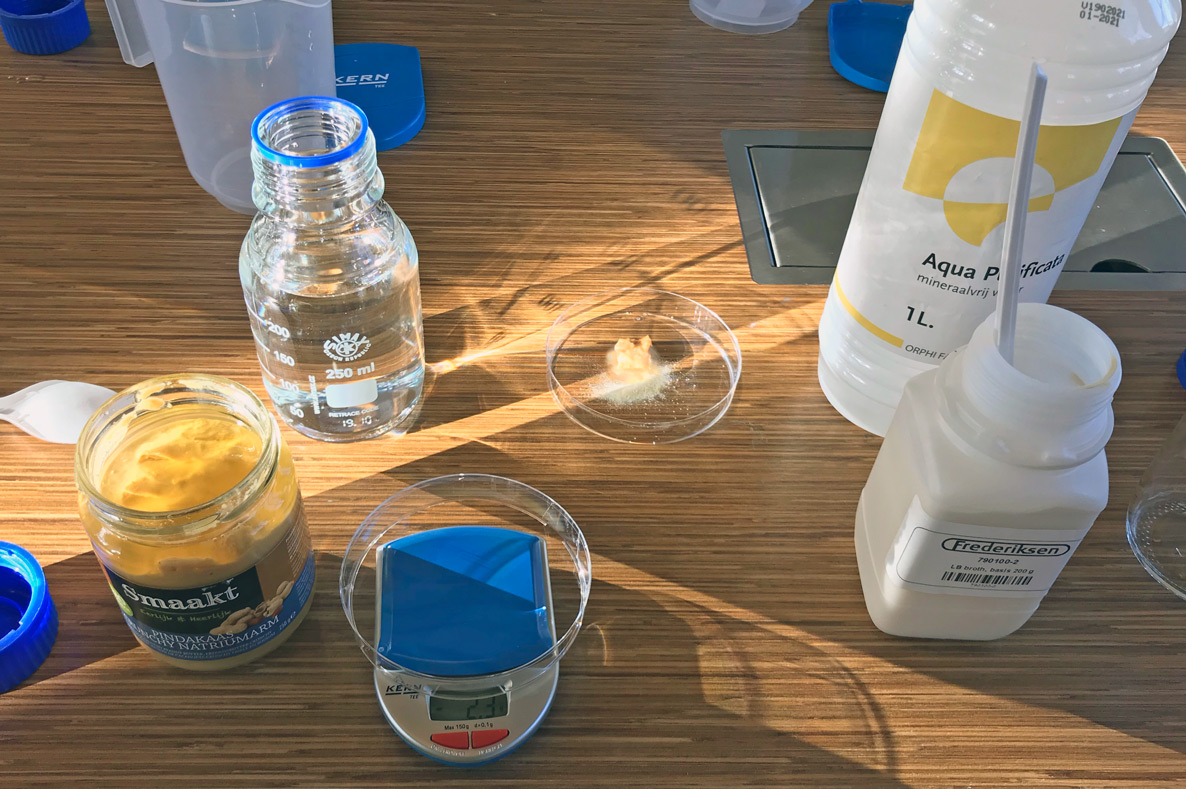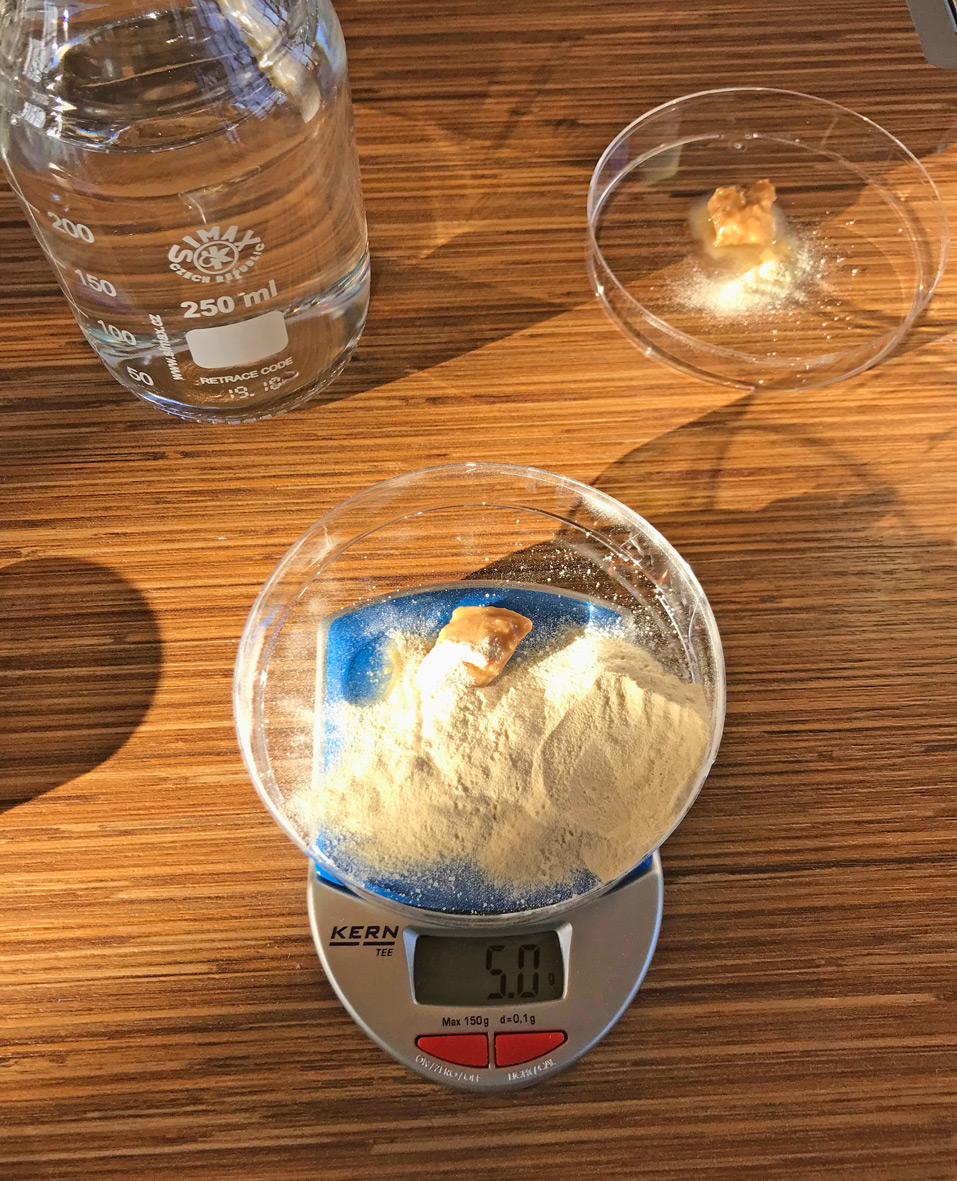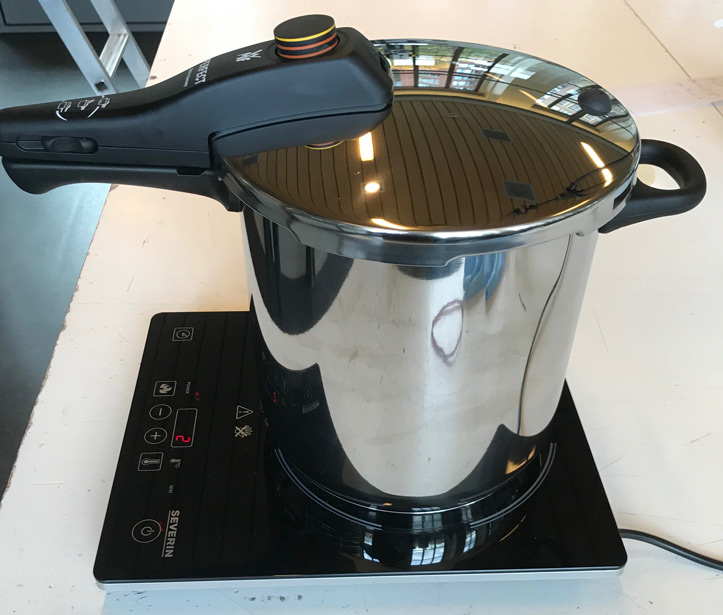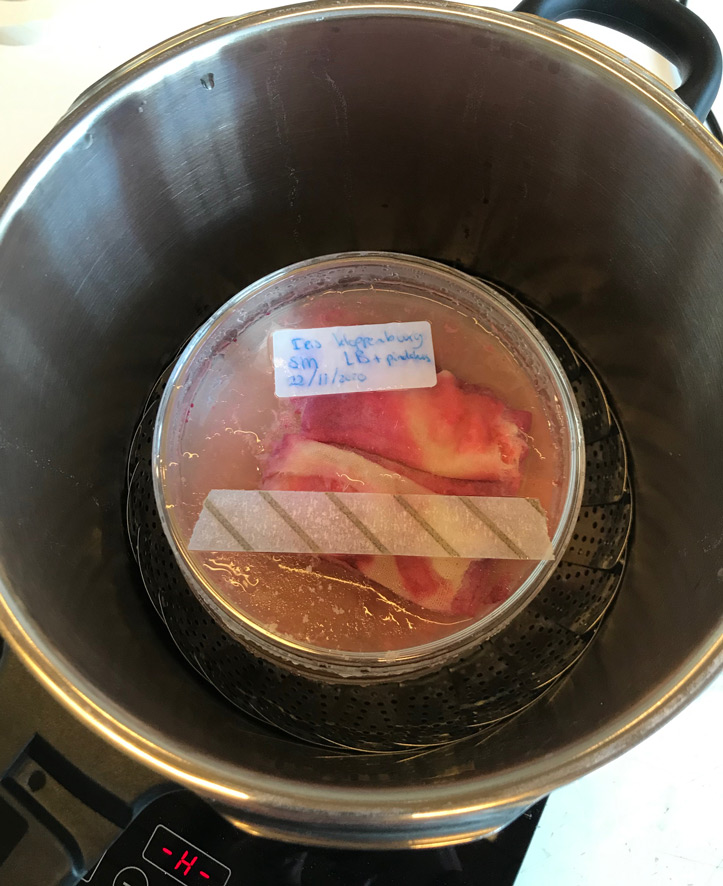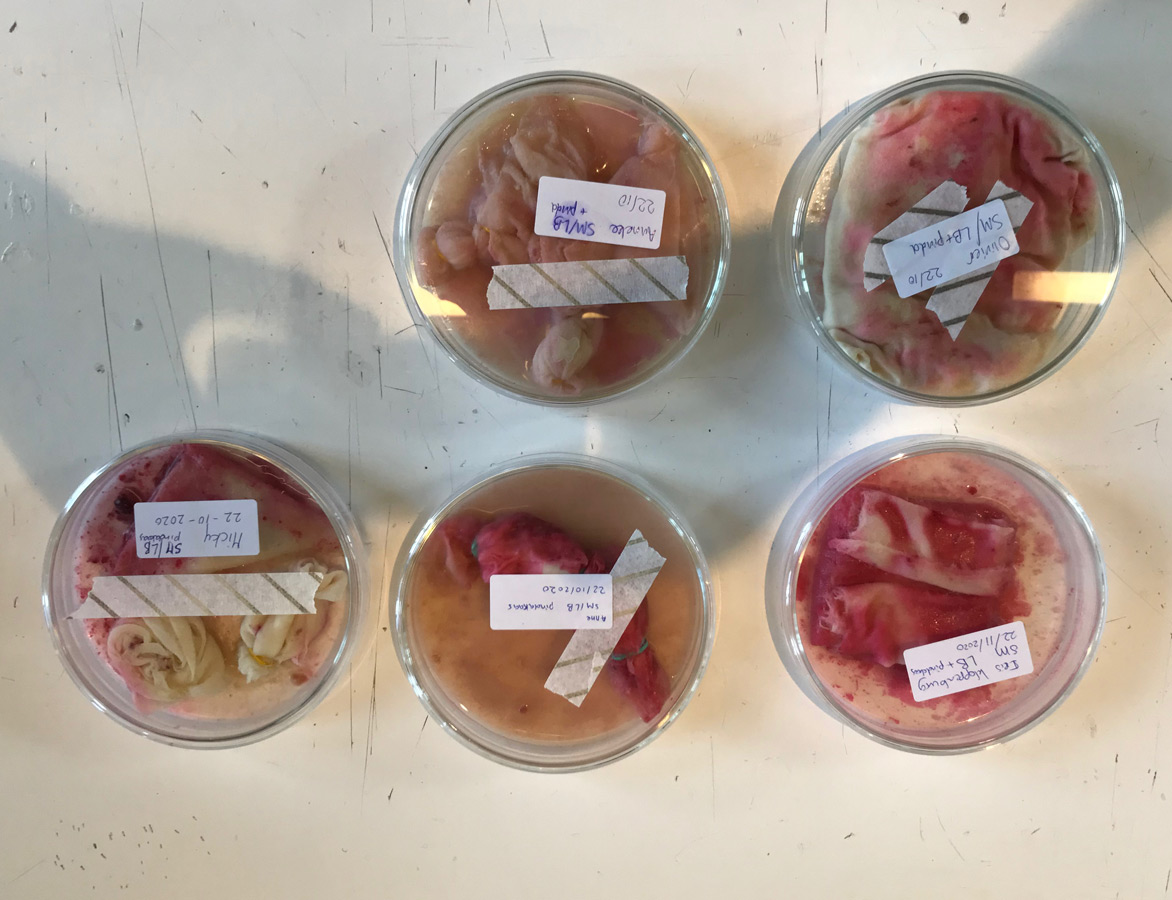BACTERIAL DYE¶
SERRATIA MARCESCENS¶
Bateria can produce beautiful colours and patterns. The easiest is a pink colour produced by Serratia Marcescens.
Research¶
"For baterial dyes various bacteria can be employed. These bacteria produce colour as a byproduct. Or rather it is part of their biofilm. The goop where bacteria live and thrive. And which also provides surprising properties, such as these colours
Research online showed that beautiful purples and blues can be achieved with Janthinobacterium lividum. Yellows come from Micrococcus luteus. Reds can be made by Arthrobacter agilis or Serratia marcescens. Where Serratia is mostly asociated with pinks. But can also produce oranges and even reds.
For this experiment we opted for Serratia Marcescens. Mainly due to the easy handling asociated with this baterium. Serratia grows well on fatty residues in warm and especially damp conditions. As such you can grow these bacteria relativly well without a fully equipped bio laboritory.
If you find any pinkish staining or goo in your bathroom, no doubt this is a colony of serratia marcesens.
"fun fact about this bacteria, the CIA weaponised it at in 19XX. Testing it over the San Francisco, by filling balloons and popping them over the city.
"
Purple/Blue: Janthinobacterium lividum Red: Arthrobacter agilis Yellow: Micrococcus luteus Pink/red: Serratia marcescens
Useful links¶
Recipe¶
Use the three backticks to separate code.
1 teaspoon of peanut butter
LHB solution
distilled water
Ketonic Alcohol
Bunsen burner
(Lab) Needle
Facemask
Sterile gloves
Lab coat
Petri dishes
A colony of Serratia marcescens
Prafin tape
Autoclave tape
Labels
An autoclave (or pressure cooker
Incubator unit
Some fabric (a silk shirt in this case)
Gallery¶
